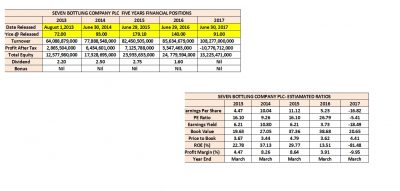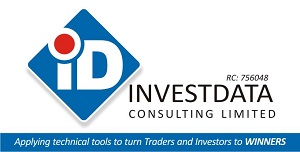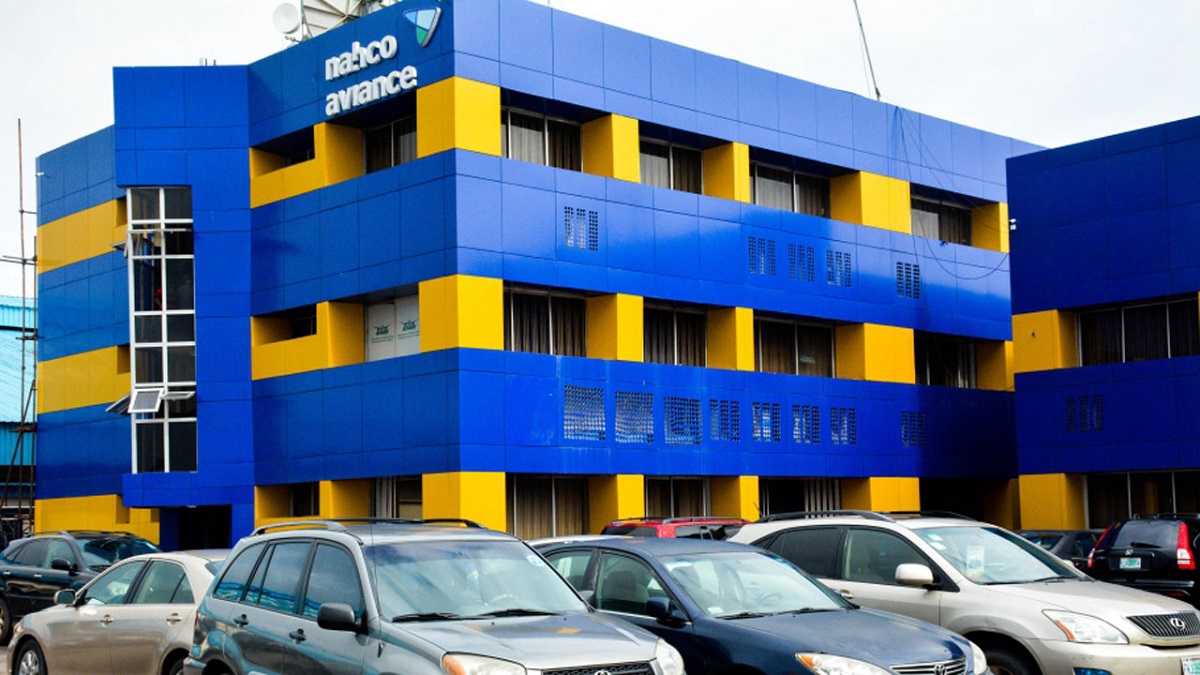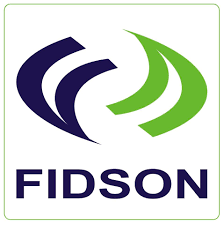7-Up Bottling Company: Share Price On Downward Slop, After Bloody Numbers
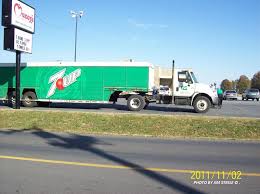
The board of 7-Up, the only listed soft drinks bottling company on the Nigeria Stock Exchange (NSE), recently released its full-year earnings report for the period ended March 31, 2017 to the investing community in line with its post-listing requirements. To enable investors plan and forecast their investment, the company has in the past five years has become regular in releasing its numbers within the stipulated timeframe.
The 2017 full-year numbers revealed a mixed performance as the top line moved northward while the bottom turned red from profit in the comparable year. The high financing and cost of sales have served as a major factor of earnings volatility for Fast Moving Consumer Goods (FMCG) in recent times amidst higher debt balances on a number of balance sheets due to the high cost of production which has robbed on 7-Up. This was also despite the growth in sales revenue to show that its market share or segment is still expanding but high of operation has eaten up profit, pushing it to a huge loss position of N10.78bn in just one financial year, despite the decline in profit 2016.
In the midst of the current tight monetary environment and possibility of further currency movements, we expect finance charges to stay elevated in the short-term, even as the high cost environment may lead to further increase in short term borrowings which is already high in the case of 7-Up. This operating cash flow in red is not good for the company and its stakeholders for now until there is a turnaround again to profit. Even then, the company’s Price to Earnings ratio of 26.79x in 2016 had already shown that the company is struggling to grow earnings to support its share price.
Any attempt by the company to raise the price of its product at this point could be suicidal, as such a move would further discourage consumption in the face of the stiff competition among major carbonate beverage and water packaging companies, especially the cottage industries. Amidst the currency weakness, and consequent increase in imported input prices, there has been an uptrend in cost of production and sales. However, the higher demand for its products, coupled with pass through from higher transportation prices and sustained supply shocks from the cottage industry continue to threaten future sales, made worse by the company’s heightened debt position. Added to these key ratios like return on assets and cost to sales of 7-Up are 10.78% and 88.79% in the red respectively.
The company’s retained earnings declined to N13.79bn from N24.78bn without major investments in capacity building for this period, a pointer to the fact that all is not well. For the processed numbers look at the table below.
The company’s declining quarterly profitability became noticeable the during 2017 financial year, just as reacted appropriately, following which its share price moved southwards to reflect the weak performance. Even many traders and institutional investors who once saw the stock as one to manage risk in their portfolio started exiting earlier to cut loss.
The disappointing numbers as a result of which approval of dividend would not be one of the items on the agenda at the next annual general meeting triggered a 5% loss of share price as at released date, revealed investors’negative sentiments for the equity, considering the loss position.
Technical View
7-Up’s price rally to the peak in 2016 was driven by impressive numbers of previous years before the company performance started dwindling following the release of its numbers for the 2016 financial year. The price action has formed a falling channel chart pattern that supports trend continuation, despite various attempts to reveres that fail.
The share could bottom out, on the basis of its shareholding structure, around N68 per share.
However, any new positioning should wait to see the Q1 and strong support level before jumping into it for the medium to long term.
The lower lows is making the stock attractive as the economic recovery is likely to impact positively on it performance going forward, meaning that investors should keep 7-Up on their watch list to know exactly when to position.
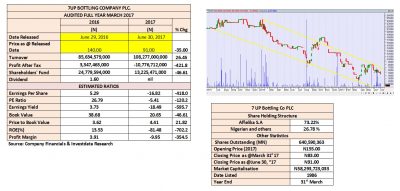
Five-Year Performance Indicators
The market continues to revalue the company’s share price on the strength of numbers posted since 2016 before this last financial year ended 31st March 2017, compared to the impressive performance recorded between 2013 and 2015 which supported the price rally witnessed during the period. The bottling company over the past five years seems to have recorded a constant growth in sales revenue, while profitability declined until it slipped into the red zone at N10.78bn in 2017.
Turnover gradually rose from the N64.09bn in 2013 to N108.28bn in 2017; just as bottom line had a geometric growth in the first three years of period under consideration, before turning negative in 2017. From N2.87bn in 2013, it peaked at N7.13bn in 2015 before dropping to N3.35bn in 2016, from where it turned red in 2017. Profit recorded through the five-year period was mixed as the price moved up and then down to the level it was last week end. Total Equity for the same period recorded same trend, falling to N13.23bn from its high of N24.78bn in 2016 and N12.58bn posted in 2013 to reflect investment injection into its capacity building.
One of the strong supporting factors of the equity before now was its constant reward in terms of dividend payment to shareholders, no matter how small, in relation to its share price and strong earnings power that had just disappeared to keep the stock on a downtrend. Looking at the table, investors have cumulatively taken N9.05 per share as dividend in five years.
Please note that the company’s share capital has remained constant for this period and is also relatively small to support the numbers and share price so far. This company, even with its increasing capacity, is yet to meet the growing demand for its products, since it rebranded and repackaged its products. Demand for its products have been on the increase as reflected on its top line, but earnings have remained in the red due to the high cost of operation, increasing debt and competition with the cottage industry .
Ratio Analysis
The company’s earnings power and growth reflected on its earnings per share that moved from N4.47 in 2013 to N10.04 in 2014 and to N11.12 in 2015, after which it dropped in 2016 to N5.23, before this latest loss per share of N16.82 each. Investors’ negative response to the latest unimpressive results and weak earnings can be traced to its increasing their waiting investment period from 16.10x in 2013 to negative 5.41x of the period of entry. Please note that the 2017 full year loss per share yielded negative 18.49 percent of the price at released date. Returns on Equity employed through the period were on the average 24.23% before the negative return of 81.48%, while the margin of the profit to the turnover figures stand low between 4.47% and 8.28% to reflect the huge cost of operation. This should expectedly require immediate action from management, because it led to the loss position.
Unfortunately, the book value of the company is far below its market value, an indication of the premium placed on the stock by the investing public, suggesting that management should also grow its assets to build margin of safety.
